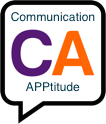While kids and parents are scrambling for school supplies, lunch boxes and backpacks, I am scrambling to get my students organized for learning vocabulary this year.
I start preparing my students over the summer break. They learn low tech vocabulary strategies with index cards. The word on the front and definition on the back. A visual cue on the front to promote memory and other ideas from my bag of tricks to enhance retrieval.
Next, we go high tech with an online vocabulary storage, like Quizlet or Study Stack. Why go high tech? Kids never lose their vocabulary cards and words this way. They are stored permanently in their account until they delete them. Words learned in September are stored online for review in January when they have midterms. Pictures can be added for each word and the cards can be printed out. Teachers can share word lists with their students and students can create groups with other students in their class to collaborate.
By starting early, we ensure students are starting off the school year with effective strategies tailored for their learning style and preferences rather than on the fly when students are stressed.



